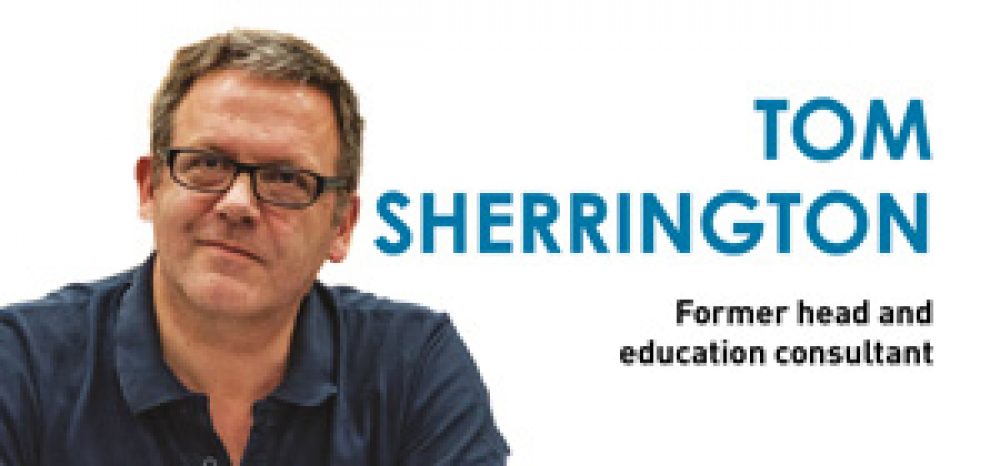Former headteacher and author Tom Sherrington steps into a Schools Week reporter’s shoes, to explore the World Innovation Summit for Education 2017, in Doha, Qatar.
Day One at the WISE Summit in Doha has been eye-opening and refreshing.
Attending a global innovation event, you have to be prepared for the buzzword bingo and, for sure, at first the cliché klaxons were sounding: 21st Century Skills! Innovation! Transformation! Knowledge Facilitation! Jobs that haven’t been created yet!
But, actually, as the day has progressed, my overwhelming conclusion has been that, once you filter out the jargon and get used to calling everyone ‘educators’, the ideas being pursued here have a lot in common with the debates we’re having in England.
As someone with increasingly ‘trad’ tendencies, I expected to find myself at odds with some of the tech evangelists and futurists, but that didn’t happen.
We’re asking the same questions: if we want all children to access a great education, what are the implications for the curriculum, assessment, leadership, teacher development, accountability mechanisms, the use of evidence?
The tech is a means to an end. In fact, the more dominant theme around the conference has been about teacher development and several of the WISE research papers focus on studies into teacher collaboration and professional learning.
As the magnificent Mike Feinberg, co-founder of KIPP Charter Schools, said: “Great schools are about only two things: great teaching and more of it.”
The challenge around the world is how to deliver the professional learning that enables all children to experience great teaching – from teachers motivated enough to sustain a career long enough to allow them to develop the expertise and experience they need to thrive.
Most of the innovations I’ve heard about have been directed at some very specific problems. This isn’t the world of tech fads and gizmos; it’s about innovation that seeks to find solutions blending tech with the micro scale human business of face-to-face teaching and the macro challenge of delivering high quality education to large populations in a highly competitive, dynamic, global knowledge economy.
There are parts of the world where the demand for education at a high level exceeds the capacity of the system (parts of China, Pakistan, Brazil, India). Here, the use of technology to accelerate teacher development or to give students direct access to high quality instruction and content is an important line of enquiry.
Researcher Julia Freeland Fisher’s paper for WISE emphasises the difference between ‘tech-rich’ environments (that may not actually deliver great learning) and ‘blended learning’ where traditional teaching modes and tech work in tandem.
You might imagine that a seminar on Artificial Intelligence and Virtual Reality would be all about teachers and students wearing giant tech-goggles or being replaced by robots. But, no, that wasn’t it. The panel chaired by James Crabtree from Lee Kuan Yew School in Singapore focused on AI-powered tech that drives apps giving students dynamic personalised feedback on assessments, access to online teaching that they couldn’t access elsewhere and personalised educational resources integrated into the flow of students’ social media engagement: bringing learning to students through their devices.
An example of this happening came from, Chinese entrepreneur Arnold Fu. He has developed a massively successful platform called CCTalk with 160 million users across China, around 7 million of whom are paying an average of $400 a year to access online courses.
The courses are supplied by teachers who get paid according to their ratings. Teachers broadcast live tutorials to hundreds or even thousands of users simultaneously with numerous assessments built-in, opportunities to ask questions and to receive feedback. The more you pay, the more personalised it becomes.
It’s in high demand because users can be ‘taught’ by someone with greater expertise than they could access otherwise. It’s market-driven and highly successful. The level of interactivity and the emphasis on curriculum, assessment and feedback is impressive. This is no fad; it’s taking China by storm.
Ben Nelson from California, chief executive officer of The Mirvana Project, explained how they have harnessed technology to solve the difficult teacher challenge of giving dynamic personalised feedback to university students during the learning process.
As well as the more standard approach of providing instructional content online, with a flipped classroom approach, they have created a platform linked to videos of each tutorial and teaching episode that allows the tutors to replay the class and provide feedback against multiple criteria in their multi-disciplinary degree courses. They’re making big claims about the success of their first year students on standardised national tests typically taken by final year students.
Finally, I met Eric Sheninger. A huge figure in the US (he’s like their version of @teachertoolkit) he’s an energy-ball of tech evangelism but also one of the most demanding educators I’ve ever met for what tech solutions need to deliver in order to be considered successful: rigour, knowledge, improved outcomes and the enhanced engagement in school that follows. A full-scale interview with Eric will feature in our extended WISE supplement next week.
Innovation has many connotations, but after today, I feel that we may have lost our way a little in this debate in the UK. If we can generate tech solutions that genuinely address some of the more difficult aspects of teaching – the micro-world of formative assessment and feedback – we’d all be rushing to use them. If we can also develop the collaborative professional learning that researchers such as Andy Hargreaves and Karen Edge have explored in their WISE research papers, we’ll be onto a winner; tech-enabled but absolutely human.







Your thoughts